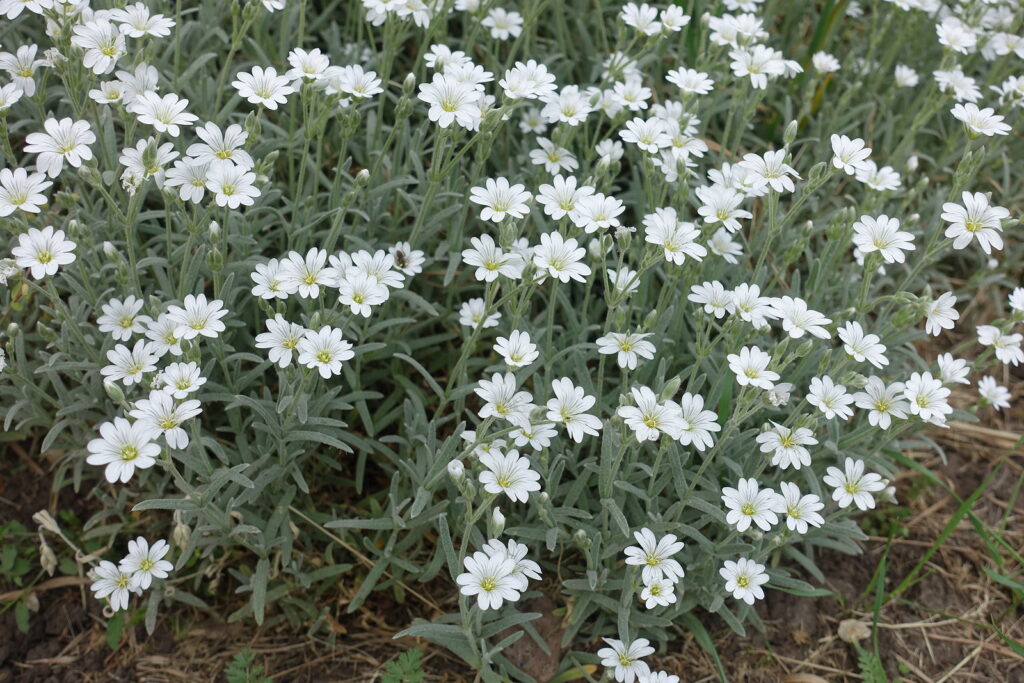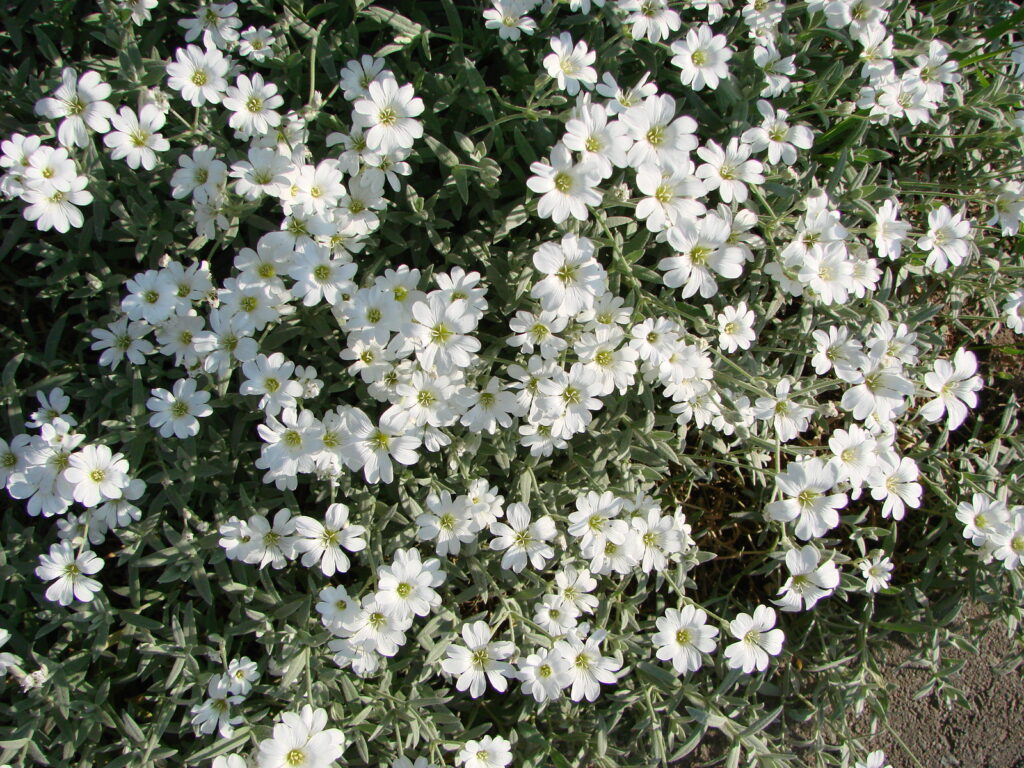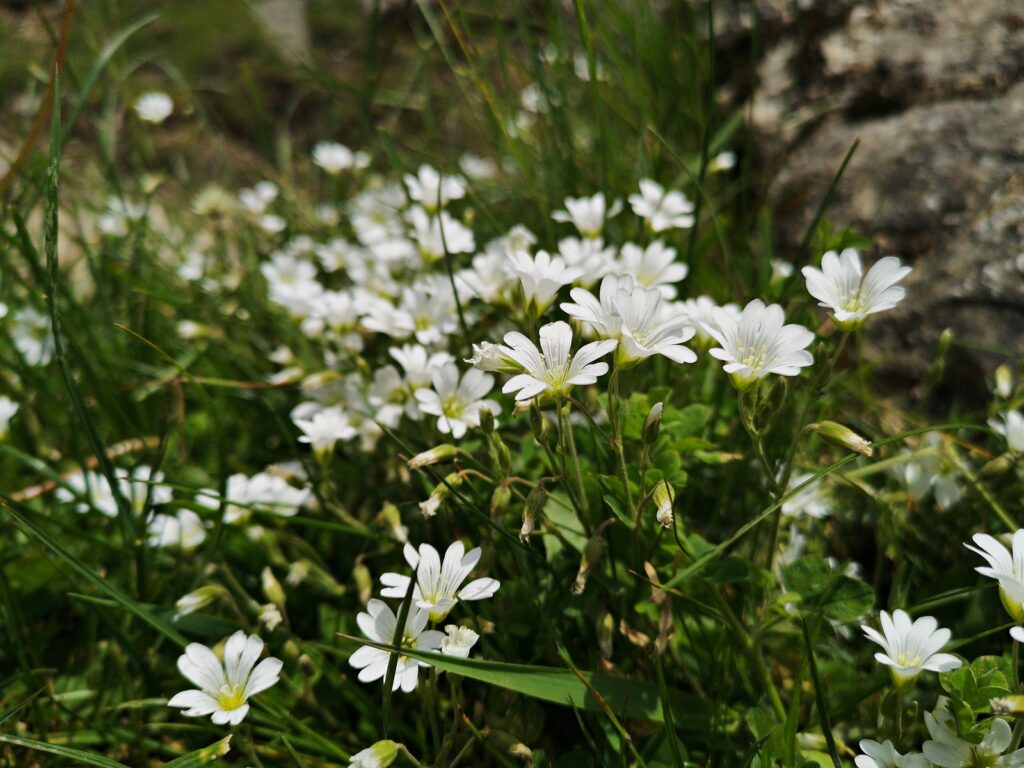Snow-in-summer, Cerastium, is a low-mounding plant with small, wooly leaves and clusters of white flowers on wiry stems. Cerastium grows 6 to 10 inches high and spreads 2 to 3 feet in a year.
Cerastium grows well in most areas except for hot, humid regions where it is best place in shade. Standing water will cause roots to rot.
Use snow-in-summer as an edge to flower borders or ground cover. It can used between stepping stones and in rock gardens. It is a good ground cover for slopes.

Get to know Cerastium
- Plant type: Perennial
- Growing Zones and range: 2-9
- Hardiness: Hardy to -35°F/-37°C
- Height and width: 6”- 10” tall (15-25cm); 12” wide
- Form: Spreading mats of 3/4-inch silver-gray, oval leaves that grow up to 8 inches high
- Flowers: Masses of small snowy white 5-petaled, deeply notched blossoms
- Uses: Flowering groundcover, drought tolerant
- Garden companions: Late spring bulbs, Johnny-jump-ups
- Bloom time: Late spring or early summer
- Common name: Snow-In-Summer
- Botanical name: Cerastium tomentosum
- Family: Caryophyllaceae
Where to plant Cerastium
- Grow Cerastium in full sun.
- Cerastium will grow in average to poor soil that is well-drained.

When to plant Cerastium
- Set Cerastium outdoors in spring in Zones 3-5. Plant in spring or fall in Zones 6-7.
Planting and spacing Cerastium
- Space Cerastium 12 to 24 inches (30-61cm) apart.
- Sow seed 1/8 inch deep in evenly prepared soil.
How to water and feed Cerastium
- Cerastium grows well in dry soil. Moderate water will sustain mature plants.
- Fertilize Cerastium only occasionally. Too much fertilizer will cause snow-in-summer to grow rapidly and become invasive.

Cerastium care
- Divide Cerastium as needed to fill vacant spots in the garden.
- Cut back foliage after flowering to keep plants neat and full.
- Cerastium is usually pest and disease free.
Cerastium common problems
- Cerastium can suffer fungal rots that blacken the leaves and stems. Remove and destroy infected plants.
Cerastium propagation
- Sow seeds in a cold frame in autumn.
- Take tip cuttings in early summer.
- Clumps spread readily; divide clumps in spring or fall.
Cerastium varieties to grow
- ‘Yo Yo’ is less invasive than other cultivars.
- ‘Silver Carpet’ is a compact selection.















